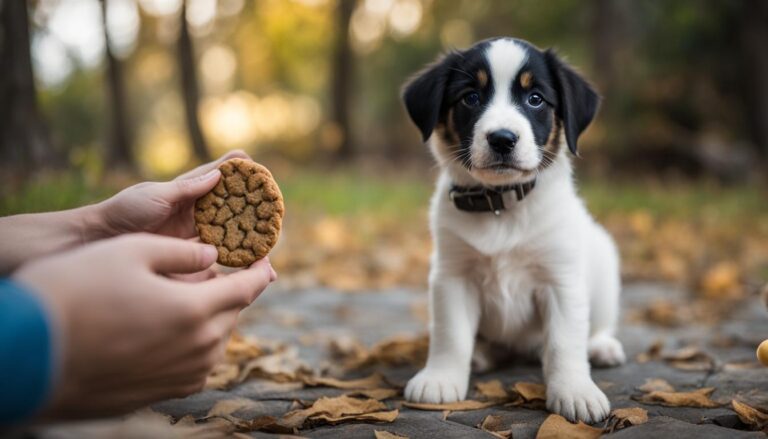Housebreaking a Puppy: Potty Training Basics
Housebreaking a puppy is an important first step in making sure your new furry friend feels at home. Teaching your puppy where to go potty takes patience, a solid routine, and lots of positive reinforcement. By starting early and staying consistent, you can help your puppy learn good bathroom habits that will last a lifetime.
Understanding Housebreaking: The Basics
What is Housebreaking?
Housebreaking a puppy is all about teaching your new furry friend where it’s okay to go potty. Think of it like potty training a child. It takes patience, consistency, and positive reinforcement. The goal is to help your puppy learn good bathroom habits without using punishment, which can make things harder and take longer.
Why It’s Important
Getting your puppy housebroken is super important. It helps keep your home clean and makes sure your puppy knows the right places to do their business. Plus, it builds a strong bond between you and your puppy as you work together on this important skill.
Common Misconceptions
There are a few myths about housebreaking a puppy that can trip you up. Some people think it’s a quick process, but it actually takes time and effort. Others believe that punishment is the way to go, but that can actually make things worse. Remember, positive reinforcement is key to success.
Housebreaking your dog: step by step process… many people complain to me how their dog simply won’t learn to go outside so here’s a simple 3 part process I use that can get even the worst dogs house trained…
Setting Up a Potty Training Schedule

Creating a solid potty training schedule is key to helping your puppy learn the ropes. You’ll want to take your puppy out at least once every 30 minutes to start. This helps them understand when and where it’s okay to go. Here’s a quick rundown of when to take your pup out:
- After eating
- After drinking
- After playing for about 5-10 minutes
- Right after waking up from a nap
As you get into a routine, you’ll notice patterns. You can even create a simple chart to track your puppy’s potty habits. This will help you figure out when they usually need to go and if you can stretch those 30-minute breaks a bit.
Here’s a sample puppy schedule for 8 weeks:
| Time | Activity |
|---|---|
| 7:00 AM | Wake up & potty break |
| 7:15 AM | Breakfast |
| 7:30 AM | Potty break |
| 8:00 AM | Playtime |
| 8:30 AM | Potty break |
| 9:00 AM | Nap time |
| 10:00 AM | Potty break |
Remember, consistency is everything! The more you stick to this schedule, the quicker your puppy will learn the right habits.
As you go along, don’t forget to reward your puppy for doing their business outside. Positive reinforcement is super important!
Tools and Supplies You’ll Need

Getting the right tools and supplies can make housebreaking your puppy a lot easier. Here’s what you’ll need to get started:
Crates and Puppy Pads
A crate is a must-have for potty training because dogs don’t like to soil where they sleep. It taps into their natural denning instinct. Puppy pads are also useful, especially for those times when you can’t take your puppy outside.
Leashes and Collars
A sturdy leash and a comfortable collar are essential. You’ll need these for taking your puppy outside to do their business. Make sure the collar fits well but isn’t too tight.
Cleaning Supplies
Accidents will happen, so be prepared with good cleaning supplies. A carpet cleaner is a lifesaver for those inevitable messes. Also, have some odor neutralizers on hand to keep your home smelling fresh.
Remember, the right tools can make the whole process smoother and less stressful for both you and your puppy.
Positive Reinforcement Techniques
Rewarding Good Behavior
When your puppy does their business outside, praise them and give them a treat. This helps them understand that they did something good. Make sure to reward them right after they finish, not after they come back inside. Puppies have short attention spans and might forget why they are being rewarded if you wait too long.
Using Treats Effectively
Treats are a great way to show your puppy they did well. Use small, easy-to-digest treats. You can also reward them with playtime or a walk. Just make sure they are completely done before you give the treat, or they might get distracted and not finish.
Avoiding Punishment
Scolding your puppy for accidents won’t help. Some old methods, like rubbing their nose in the mess, are not only ineffective but also confusing for the puppy. Instead, focus on positive reinforcement dog training. Clean up accidents without making a fuss and use a cleaner that removes odors so they don’t go in the same spot again.
Remember, patience and consistency are key. Make your puppy feel like a little canine Einstein every time they do the right thing.
Handling Accidents Gracefully
Cleaning Up Properly
Accidents are bound to happen, and that’s okay! The key is to clean up thoroughly. The odor from past accidents acts like a “restroom” sign for your dog. Use a cleaner designed for pet stains, like Nature’s Miracle or Skout’s Honor. After cleaning, get on your hands and knees and sniff the area to make sure the smell is gone. You might be surprised how many “missed” spots you find this way!
Preventing Future Accidents
Pay attention to when and where the accidents are happening. If you notice accidents always occur in the same room, limit your puppy’s access to that room for a while. If they happen at the same time, add a potty break at that time. Staying outside longer with your puppy may also help curb accidents. They might need extra time to explore and stretch their legs before they feel the urge to go.
Staying Patient and Consistent
Mistakes happen, and that’s part of the process. Puppies aren’t capable of connecting your anger with their accident. So, stay calm and patient. Consistency is key. Keep up with your potty training routine, and your puppy will get the hang of it eventually.
Remember, patience and consistency are your best friends during this time. Your puppy is learning, and so are you. Keep at it, and you’ll both succeed!
Recognizing When Your Puppy Needs to Go
Common Signs
Recognizing when your puppy needs to go is key to successful potty training. Some signs that your puppy needs to go outside include:
- Barking
- Scratching at the door
- Squatting
- Restlessness or pacing
- Sniffing
- Circling
When you see any of these signs, take them out to their potty spot right away. Then, praise and reward them immediately after they use the correct spot.
Using Commands
Teaching your puppy to go on command can make potty training easier. Use a consistent phrase like “Go potty” every time you take them outside. Over time, they’ll learn to associate the command with the action. This can be especially helpful for those early morning or late-night trips outside.
Nighttime Considerations
Kennel training a puppy at night can help manage nighttime potty needs. Puppies often whine in their crate when they need to go out. If you hear your puppy whining in crate, take them outside immediately. This helps them learn that whining means a trip outside, not playtime. Remember, patience is key during these nighttime outings.
Dealing with Setbacks and Regression
Understanding Setbacks
Setbacks are a normal part of house training a puppy. Even if your puppy has been doing well, they might still have accidents. Don’t get discouraged. Just keep taking your puppy out when they show signs they need to go and keep rewarding them for doing it right.
Revisiting Training Steps
If your puppy starts having more accidents, it might be time to go back to the basics. Make sure you’re sticking to a routine and giving your puppy plenty of chances to go outside. Sometimes, a change in their environment or schedule can cause setbacks.
Staying Positive
It’s important to stay positive and patient. Puppies can sense your frustration, which can make things worse. Remember, every puppy learns at their own pace. Keep encouraging them and celebrate their successes, no matter how small.
House training a puppy takes time and patience. Stay consistent and positive, and your puppy will get there eventually.
Conclusion
Housebreaking a puppy might seem like a big job, but with patience and consistency, it can be done. Remember, every puppy is different, so what works for one might not work for another. Stick to your plan, be patient, and celebrate the small wins. Before you know it, your puppy will be a pro at going potty in the right place. Happy training!
Key Takeaways
- Housebreaking is all about teaching your puppy where it’s okay to go potty.
- Consistency and patience are key to successful potty training.
- Using tools like crates and puppy pads can make the process easier.
- Positive reinforcement helps your puppy learn faster and happier.
- Accidents will happen, but staying calm and consistent is crucial.
Frequently Asked Questions
What does housebreaking mean?
Housebreaking means teaching your puppy where they should go potty. It’s like potty training a child and needs patience, consistency, and positive reinforcement.
Why is housebreaking important?
Housebreaking is important because it helps your puppy learn good bathroom habits. This prevents messes in your home and helps keep your puppy healthy.
What are some common misconceptions about housebreaking?
Some people think housebreaking happens quickly, but it takes time. Others believe punishment works, but positive reinforcement is more effective.
How do I create a potty training schedule?
To create a potty training schedule, plan regular potty breaks throughout the day, especially after meals, naps, and playtime. Stick to the schedule as much as possible.
What tools do I need for potty training?
You will need a crate, puppy pads, a leash, and cleaning supplies. These tools help manage your puppy’s environment and clean up accidents.
What should I do if my puppy has an accident?
If your puppy has an accident, clean it up properly to remove any smells. Don’t punish your puppy; instead, reinforce good behavior by taking them outside regularly.








One Comment